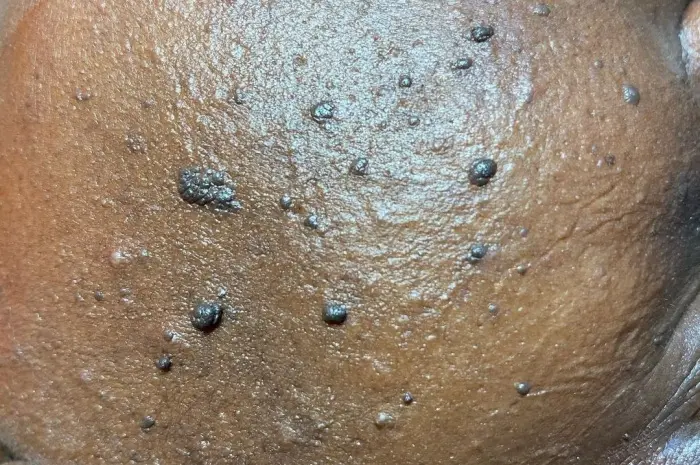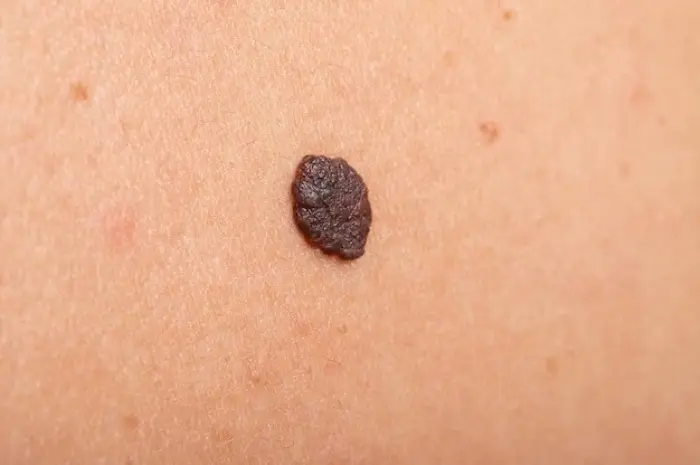Dealing with skin tags can be both annoying and embarrassing. These small, benign growths are often harmless but can cause discomfort or irritation, especially when they appear in visible areas or where they are frequently rubbed by clothing or jewelry.
In this article, we’ll explore safe and easy methods for skin tag removal, helping you achieve clear, smooth skin with minimal hassle.
What Are Skin Tags?
Skin tags, medically known as acrochordons, are small, soft, benign skin growths that typically appear on the neck, armpits, groin, eyelids, and under the breasts. They are composed of a core of fibers and ducts, nerve cells, fat cells, and a covering or epidermis.
Common Areas Where Skin Tags Appear
Skin tags can appear anywhere on the body but are most common in areas where skin folds or rubs together, such as the neck, armpits, groin, and under the breasts. They can also be found on the eyelids and other areas of the face.
Why Remove Skin Tags?

While skin tags are generally harmless and painless, many people choose to remove them for cosmetic reasons or because they cause discomfort or irritation. Removing skin tags can also prevent them from getting caught on clothing or jewelry, which can be painful and lead to bleeding or infection.
Understanding Skin Tags
Causes of Skin Tags
The exact cause of skin tags is unknown, but they tend to develop from friction or rubbing of the skin. Factors such as obesity, diabetes, and pregnancy can increase the likelihood of developing skin tags. Genetics also play a role, as skin tags can run in families.
Are Skin Tags Harmful?
Skin tags are benign and typically do not pose any health risks. However, if a skin tag changes in appearance, becomes painful, or bleeds, it’s important to seek medical advice to rule out other skin conditions.
Prevention Tips
Maintain a Healthy Weight
Excess weight can increase skin friction, leading to the formation of skin tags. Maintaining a healthy weight through diet and exercise can help reduce the risk of developing new skin tags.
Keep Your Skin Dry
Moist environments can contribute to skin tag formation. Keeping your skin dry, especially in areas prone to friction, can help prevent skin tags. Use powder or antiperspirant to reduce moisture in areas such as the armpits and groin.
Avoid Tight Clothing
Tight clothing can rub against the skin and cause irritation, leading to the development of skin tags. Opt for loose-fitting, breathable fabrics to minimize skin friction.
Safe Removal Methods

Over-the-Counter Solutions
Skin Tag Removal Creams
There are various over-the-counter creams available that can effectively remove skin tags. These creams typically contain ingredients that help to dry out the skin tag, causing it to fall off naturally over time.
Skin Tag Patches
Skin tag patches are another popular option. These patches are infused with medication that helps to dissolve the skin tag. They are easy to use and can be applied directly to the skin tag for a set period.
Home Remedies
Apple Cider Vinegar
Apple cider vinegar is a popular home remedy for skin tag removal. Its acidity helps to break down the tissue surrounding the skin tag, causing it to fall off. Simply soak a cotton ball in apple cider vinegar, apply it to the skin tag, and secure it with a bandage. Repeat this process daily until the skin tag falls off.
Tea Tree Oil
Tea tree oil has natural antiseptic properties that can help dry out skin tags. Apply a few drops of tea tree oil to a cotton ball and secure it to the skin tag with a bandage. Leave it on overnight and repeat the process daily until the skin tag falls off.
Professional Treatments
Cryotherapy
Cryotherapy involves freezing the skin tag with liquid nitrogen. This procedure is quick and usually requires only one treatment session. The skin tag will fall off within a few days after the treatment.
Surgical Removal
For larger or more stubborn skin tags, surgical removal may be necessary. This can be done using a scalpel or surgical scissors. The procedure is quick and can be performed in a doctor’s office.
Step-by-Step Guide to Removing Skin Tags at Home
Preparing the Area
Before attempting to remove a skin tag, it’s important to clean the area thoroughly with soap and water. This helps to reduce the risk of infection.
Using Apple Cider Vinegar
Soak a cotton ball in apple cider vinegar and apply it to the skin tag. Secure it with a bandage and leave it on for 10-15 minutes. Repeat this process daily until the skin tag falls off.
Applying Tea Tree Oil
Apply a few drops of tea tree oil to a cotton ball and secure it to the skin tag with a bandage. Leave it on overnight and repeat the process daily until the skin tag falls off.
Using Over-the-Counter Products
Follow the instructions on the product packaging for the best results. Typically, this involves applying the product to the skin tag and allowing it to dry. Repeat as directed until the skin tag falls off.
When to See a Doctor

Signs That a Skin Tag Needs Professional Attention
If a skin tag changes in color, size, or shape, becomes painful, or bleeds, it’s important to seek medical advice. These could be signs of a more serious condition.
Risks of DIY Removal
While home remedies and over-the-counter solutions can be effective, there are risks involved. These include infection, scarring, and incomplete removal of the skin tag. If you’re unsure or uncomfortable with DIY removal, it’s best to consult a healthcare professional.
Post-Removal Care
Keeping the Area Clean
After removing a skin tag, it’s important to keep the area clean to prevent infection. Wash the area with soap and water and apply an antiseptic ointment if necessary.
Avoiding Irritation
Avoid touching or irritating the area where the skin tag was removed. Allow the skin to heal naturally and avoid wearing tight clothing that could rub against the area.
Possible Complications
Infection
Infection is a risk with any skin procedure. If you notice redness, swelling, or pus, seek medical advice as you may need antibiotics.
Scarring
Scarring is another potential complication. Using proper techniques and following post-removal care instructions can help minimize the risk of scarring.
The time it takes for a skin tag to fall off depends on the removal method used. Home remedies and over-the-counter products can take several days to weeks, while professional treatments typically result in faster removal.








